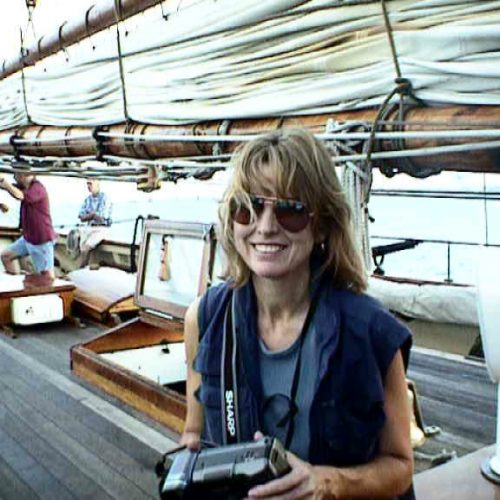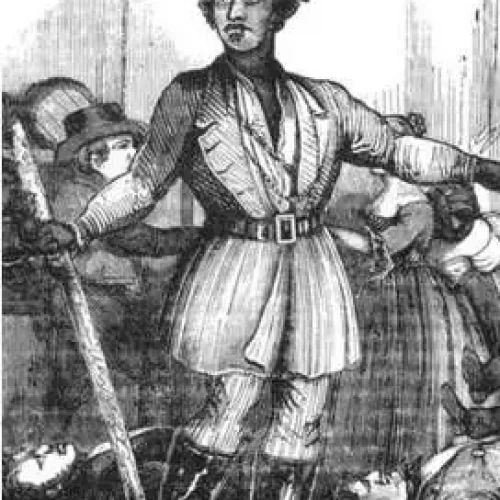Photo courtesy of The National Sailing Hall of Fame
The National Sailing Hall of Fame, based in Annapolis, and the Sydney Flying Squadron collaborated to put on a regatta for the Hall of Fame’s sandbaggers and the traditional Aussie 18 foot skiffs that the Squadron sails. They shipped three of the skiffs (Alruth, Aberdare, and Australia IV), all reproductions of designs from the 1920’s through 1950, to Annapolis in a shipping container, and assembled them there.
The sandbaggers (Bull and Bear) are replicas of America’s earliest racing craft, which were essentially workboats used for tonging oysters. In a strange manifestation of Adam Smith’s Invisible Hand, the designs were refined for more and more speed, spreading more and more canvas, because the first boat back to the docks would fetch the highest prices for their catch. The name arose because they would have to use bags of sand as ballast to keep them upright when not filled with their catch.
I sailed two days on the skiffs, and one on the sandbaggers.
The skiffs are, in a word, insane. They are 18 feet long, but their sparred length is somewhere around 40 feet, because of a 14 foot bowsprit and because the main boom sticks out well beyond the transom. They are typically crewed with around 8 people. The spinnaker pole is in 4 sections, kept inside the boat, and needs to be assembled to its full 25 foot (!) length before setting the spinnaker. There are lee cloths sticking up from the gunwale on each side, and if the leeward one gets forgotten when you tack, you sink. If someone shifts their weight the wrong way, you sink. If both sail trimmers are not completely on their game at all times, you sink. I think it is this constant pressure that has allowed the Aussies to develop their exceedingly creative foul language, a sort of linguistic equivalent of Darwin’s finches. I wound up placing second place on Alruth, in light air, and a race win on Aberdare on day two, in a fresh breeze.
The third day, I sailed as part of the American team in a match race against the Australians in the sandbaggers, which seemed absolutely palatial and stable in comparison to the skiffs. We didn’t quite hold our end up, but we did keep it very close, rounding half the marks either overlapped with or less than a length behind the Aussies.
Saturday was a (much needed, by me) rest day, and Sunday all these boats, plus 20 or so other classic boats and yachts, took place in the Hall of Fame’s Wooden Boat Regatta. I sailed with Tom Price, a great local sailor and a friend of Pride for many years, on his wooden Star boat from 1959. We were able to win our class.
As a result of all this, I am very tired and sore and sunburned, and now I have to go back to work.
Signed,
Captain Jordan Smith







